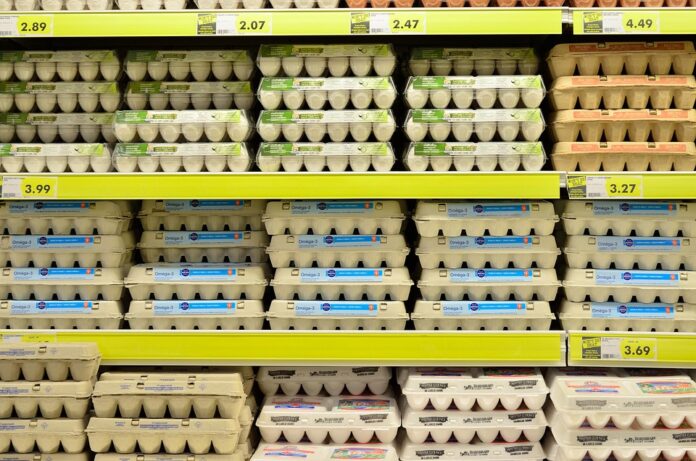Introduction
The grocery store industry in Canada is highly competitive, with several major players vying for market share. In this report, we will be taking a closer look at the top 10 grocery store brands in Canada based on their market share. We will analyze their financial data, industry insights, and current trends to provide a comprehensive overview of the Canadian grocery market.
1. Loblaw Companies Limited
Market Share:
Loblaw Companies Limited is the largest grocery retailer in Canada, with a significant market share of over 30%. The company operates a diverse portfolio of stores, including Loblaws, Real Canadian Superstore, and No Frills.
Financial Data:
In 2020, Loblaw reported total revenue of $52.7 billion, making it one of the most profitable grocery retailers in Canada.
Industry Insights:
Loblaw has been at the forefront of innovation in the grocery industry, introducing online grocery shopping and delivery services to meet the changing needs of consumers.
2. Sobeys Inc.
Market Share:
Sobeys Inc. is the second-largest grocery retailer in Canada, with a market share of around 25%. The company operates stores under various banners, including Sobeys, Safeway, and FreshCo.
Financial Data:
In 2020, Sobeys reported total revenue of $27.4 billion, demonstrating strong financial performance in the Canadian grocery market.
Industry Insights:
Sobeys has focused on expanding its organic and health food offerings to cater to the growing demand for healthier food options among Canadian consumers.
3. Metro Inc.
Market Share:
Metro Inc. is another major player in the Canadian grocery market, with a market share of approximately 15%. The company operates stores under the Metro and Food Basics banners.
Financial Data:
In 2020, Metro reported total revenue of $16.5 billion, showcasing its strong presence in the Canadian grocery industry.
Industry Insights:
Metro has been investing in technology and automation to improve efficiency in its supply chain and enhance the shopping experience for customers.
4. Walmart Canada
Market Share:
Walmart Canada is a major player in the Canadian grocery market, with a market share of around 10%. The company operates supercenters and discount stores across the country.
Financial Data:
In 2020, Walmart Canada reported total revenue of $24.7 billion, making it one of the top performers in the Canadian grocery industry.
Industry Insights:
Walmart Canada has been expanding its online grocery offerings to compete with other e-commerce grocery retailers in the Canadian market.
5. Costco Wholesale Canada
Market Share:
Costco Wholesale Canada is a popular choice for Canadian consumers, with a market share of approximately 5%. The company operates warehouse clubs across the country.
Financial Data:
In 2020, Costco Wholesale Canada reported total revenue of $13.6 billion, reflecting its strong position in the Canadian grocery industry.
Industry Insights:
Costco Wholesale Canada has been focusing on providing high-quality products at competitive prices to attract and retain customers in the competitive grocery market.
6. Empire Company Limited
Market Share:
Empire Company Limited is a key player in the Canadian grocery industry, with a market share of around 4%. The company operates stores under the Sobeys, Safeway, and FreshCo banners.
Financial Data:
In 2020, Empire Company Limited reported total revenue of $25.1 billion, demonstrating its strong financial performance in the Canadian grocery market.
Industry Insights:
Empire Company Limited has been investing in expanding its e-commerce capabilities to meet the growing demand for online grocery shopping among Canadian consumers.
7. Overwaitea Food Group
Market Share:
Overwaitea Food Group is a prominent grocery retailer in Western Canada, with a market share of approximately 3%. The company operates stores under the Save-On-Foods and Urban Fare banners.
Financial Data:
In 2020, Overwaitea Food Group reported total revenue of $5.8 billion, showcasing its strong presence in the Western Canadian grocery market.
Industry Insights:
Overwaitea Food Group has been focusing on sustainability initiatives and locally sourced products to appeal to environmentally conscious consumers in Western Canada.
8. Longo’s
Market Share:
Longo’s is a popular grocery retailer in Ontario, with a market share of around 2%. The company operates stores under the Longo’s and Grocery Gateway banners.
Financial Data:
In 2020, Longo’s reported total revenue of $2.2 billion, demonstrating its strong performance in the Ontario grocery market.
Industry Insights:
Longo’s has been focusing on providing high-quality fresh produce and gourmet products to attract discerning shoppers in the competitive Ontario grocery market.
9. Farm Boy
Market Share:
Farm Boy is a growing grocery retailer in Ontario, with a market share of approximately 1%. The company operates stores that focus on fresh, locally sourced products.
Financial Data:
In 2020, Farm Boy reported total revenue of $1.5 billion, showcasing its potential for further growth in the Ontario grocery market.
Industry Insights:
Farm Boy has been expanding its store footprint and product offerings to cater to the demand for fresh, locally sourced products among Ontario consumers.
10. Thrifty Foods
Market Share:
Thrifty Foods is a popular grocery retailer in British Columbia, with a market share of around 1%. The company operates stores that focus on quality products and customer service.
Financial Data:
In 2020, Thrifty Foods reported total revenue of $1.3 billion, showcasing its strong performance in the British Columbia grocery market.
Industry Insights:
Thrifty Foods has been investing in expanding its store network and enhancing its product offerings to meet the evolving needs of British Columbia consumers.
Overall, the Canadian grocery market is highly competitive, with several major players vying for market share. Each of the top 10 grocery store brands in Canada brings something unique to the table, whether it’s a focus on innovation, high-quality products, or customer service. As consumer preferences continue to evolve, these grocery retailers will need to adapt and innovate to stay ahead in the competitive Canadian grocery industry.



